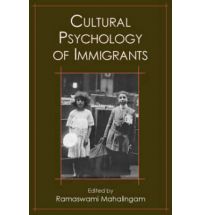While researching the immigrant experience and theories of immigration, I came across an excellent book called Cultural Psychology of Immigrants, edited by Ramaswami Mahalingam with a chapter by Silvia Pedraza on the immigrant experience in America. Pedraza deals with the major question concerning immigrant research that is what factors impel immigration and what can be attained from it? (34). Pedraza questions how to describe this process, whether it is “assimilation, adaptation, integration, incorporation and diasporic citizenship?” (34)

Pedraza also mentions the internal colonialism model that is a major challenge to assimilation theory. The theoretical aim of this model is to delineate the ways in which the experiences of racial minorities like the indigenous people such as Native Americans and the oldest immigrants such as Mexicans, Blacks and Puerto Ricans differentiate from White European immigrants’ experiences at the turn of the century.
The internal colonization model proposes that the experiences of the two groups differed significantly from white European immigrants because their race and colour determined their place and role in the production system they occupied (Pedraza 36; Blauner 400). Proponents of the theory believe this is a result of voluntary and involuntary migration and forced and unforced adoption of cultural values.
The internal colonisation model is relevant to my thesis topic research because I wish to examine how the traumatic effects of colonisation impacts upon Native American identity and culture.
Works Cited
Blauner, Robert. “Internal Colonialism and Ghetto Revolt.” Social Problems 16.4 (1969): 393-408. JSTOR. Web. 07 Oct. 2010.
Pedraza, Silvia. “Assimilation or Transnationalism?: Conceptual Models of the Immigrant Experience in America.” Cultural Psychology of Immigrants. Ed. Ramaswami Mahalingam. New Jersey: Erlbraum, 2007. Print.























































